The McLaren 765LT Is Ballistic
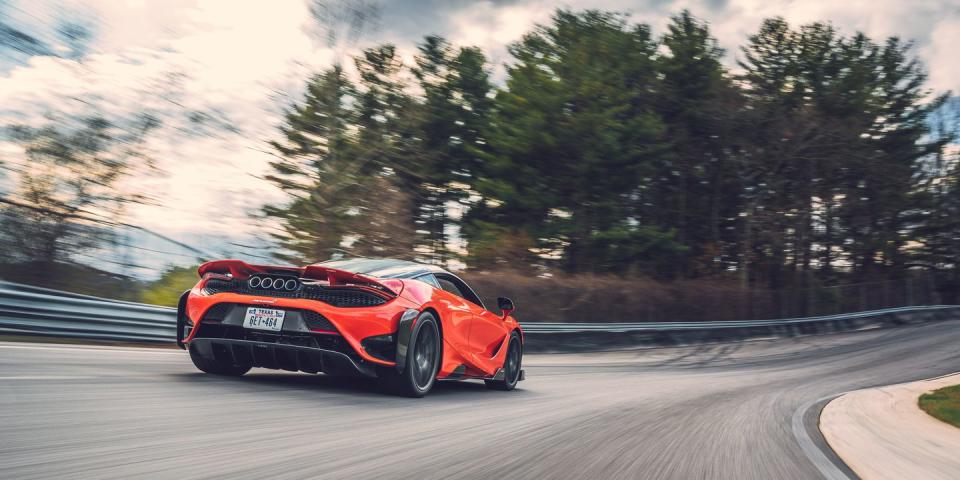
In 1967, the first driver officially broke the one-minute barrier at Lime Rock Park. Sam Posey got his Can-Am McLaren race car around the 1.53-mile bullring in a blistering 58.6 seconds. It’s a time that’s still considered quick today. Sam likes to say that anything lapping the track in less than a minute is really moving.
Over time, as speeds increased and lap times dropped below 50 seconds, modifications were made to the track to keep cars in check. First a chicane was added at the top of the perilous uphill, a blind section famous for making some cars lift their front ends, after John Morton had a terrifying airborne crash that luckily didn’t kill him. In 2008, an even bigger change saw the uphill bypassed with a tight chicane that included a heavy braking zone, a further step to keep cars on the ground. It also saw a big change in lap times, slowing them by seconds.
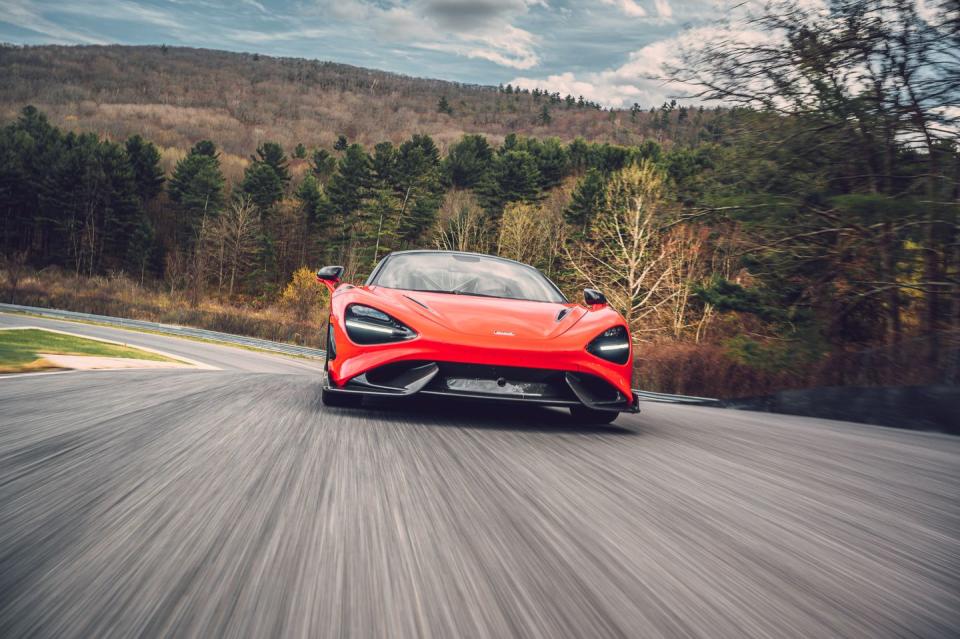
On that slower layout, the McLaren 765LT—the wildest, most powerful, and track-focused version of the 720S—was able to run a 57.6-second lap. That’s a full second quicker than Posey’s Can-Am car, one of the most powerful and daunting race cars of all time. It even topped 160 mph on the front straight, a full 15 mph more than the current McLaren 720 GT3 race car. Outrageous numbers for any car, let alone one you can drive on the street.
The 765LT is nothing if not outrageous. The hard-core version of our 2017 Performance Car of the Year, the 765LT has 755 horsepower and weighs about 140 pounds less than the car it’s based on. It’s louder, meaner, and more serious than the 720S. It’s also more intimidating.
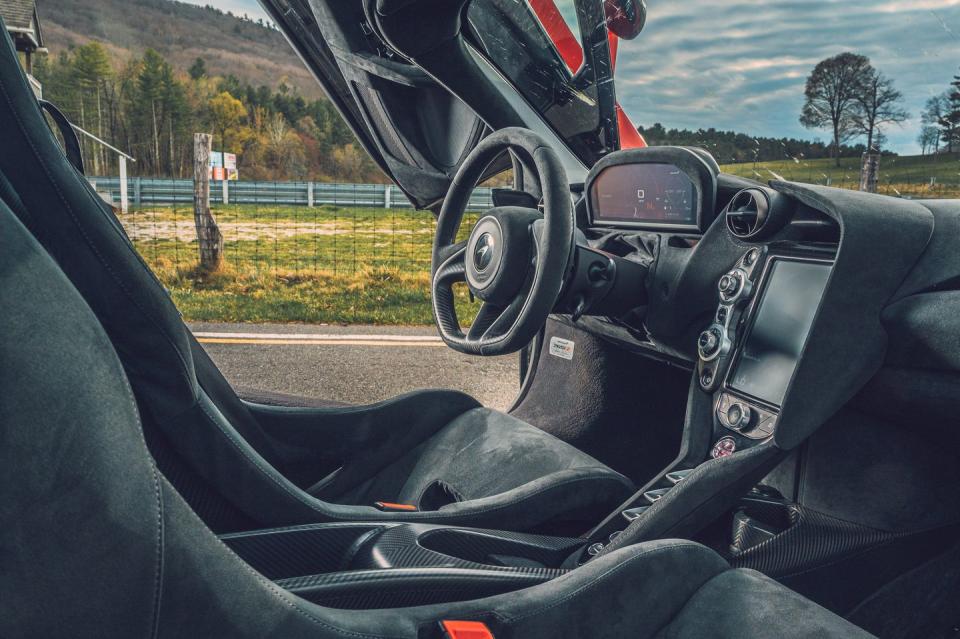
By all accounts the 765LT should be terrifying. This is a lightweight road car putting a righteous amount of power through just the rear wheels. Where the 720S is forgiving and friendly to drive, the 765LT has a bit of a reputation as a handful, a bit too crazy, a bit too wild. By our own account, this car can light up its tires in the first few gears on the highway. Sounds a lot like the modern analog of Can-Am, a series that produced cars with insane power outputs and then let the drivers figure out how to keep them under control.
With that in mind, my first few laps were trepidatious. I set traction control to very much on, mindful that any throttle tip-in could send an English carbon-fiber missile hurtling into the woods.
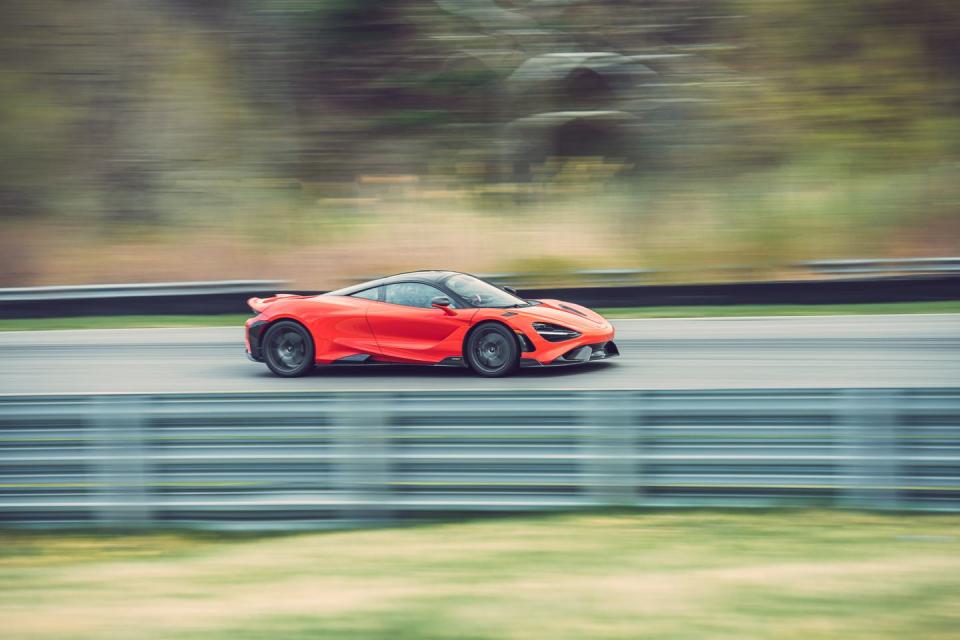
There was really no need to worry. As speeds increased, so did confidence. The LT never tried to bite, didn’t try to send me off track, didn’t do anything unpredictable at all. It was intensely communicative, electrifying in a straight line, and had breathtaking brakes.
These brakes are directly off the track-focused Senna hypercar, huge carbon-ceramic rotors. They’re very much needed on the braking zone into Big Bend, Lime Rock’s first turn. You want to get on those brakes late and trail them in to get the car rotating. Even if the McLaren isn’t intimidating to drive, the big 160-plus-mph speeds it posts at the end of the short straight are not to be taken lightly.
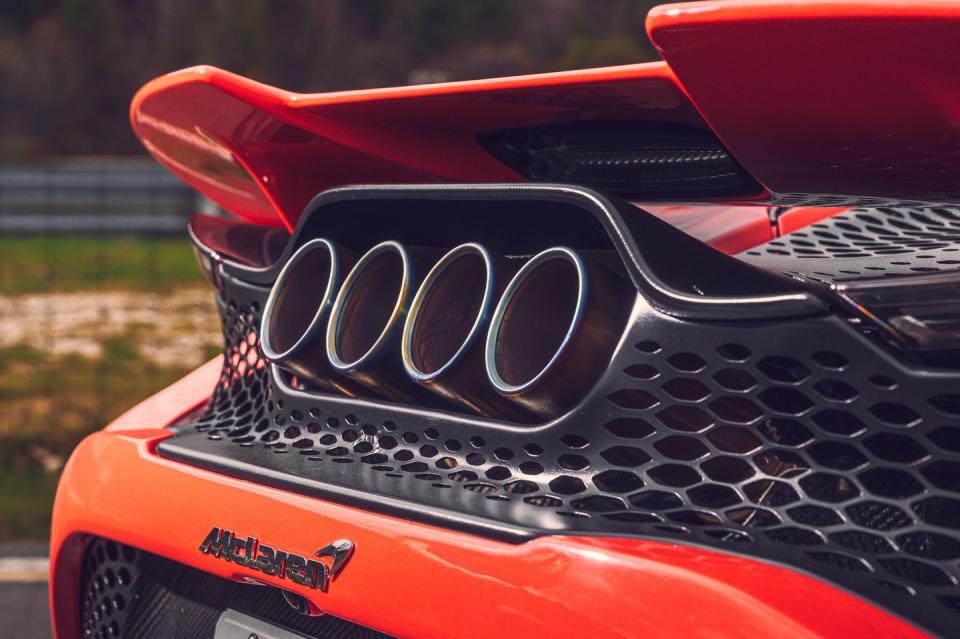
The good news is that these are some of the best brakes fitted to any road car. The ABS tuning is spot on, engaging right when it needs to. The pedal has actual feel, solid and confidence-inspiring, and the brakes chatter underfoot as the LT sheds nearly 90 mph into the corner. It’s the same thing with the steering, which, like every McLaren, may be the finest fitted to any roadgoing car.
McLaren’s hydraulic setup isn’t only chattery and communicative, but also feelsome and accurate, building weight naturally through the corner and giving actual information to your hands, a true rarity these days. And because it has far less downforce than the Senna and nearly comparable power, the 765LT is lively at speeds where the Senna would feel planted. At these speeds quick hands are paramount, as fast corners can feel like a precarious edge between speed and disaster. But the chatty nature of every input gives your hands and feet the information they need to make that edge more of a gentle slope, in turn taking something outwardly intimidating and making it approachable.
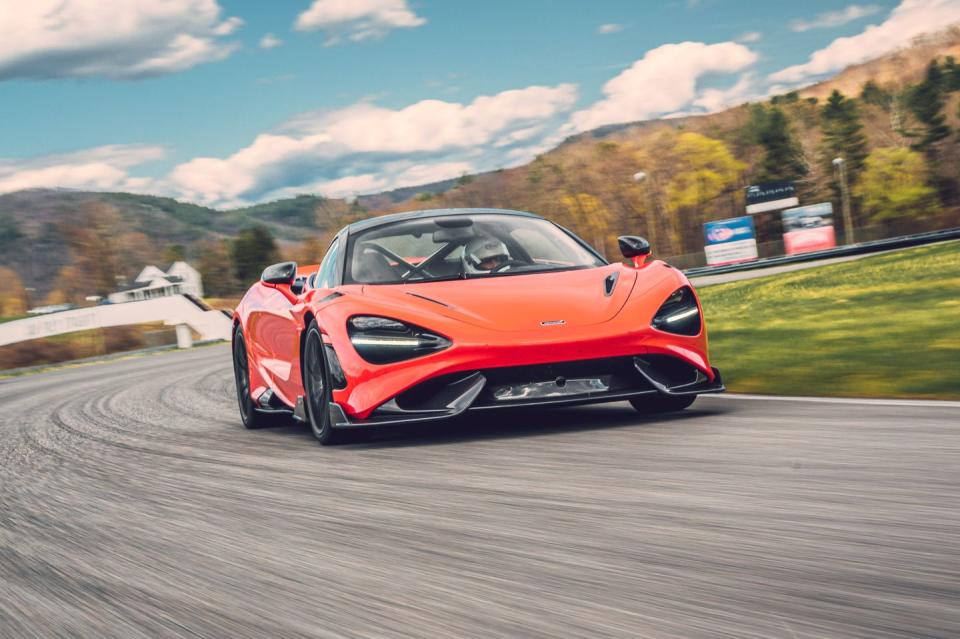
Soon the traction and stability control are turned way down. The sticky Pirelli tires come up to temp. Midcorner speeds rise. Braking points get pushed further back. And then you start experimenting with lines, trailing more brake, getting back to power earlier and earlier, trusting that slides under power are eminently catchable.
That’s when the 765LT becomes magical. This car is at its best when a lot is being asked of it. A timed lap, for instance. That the LT can run a lap on Lime Rock with the uphill chicane in the mid-57 second range is wild. Our 2021 Performance Car of the Year, the Mustang GT500, ran a 59.6 at its quickest on the track. Consider that on the quicker layout of this track, without the chicane, we once lapped a Corvette Stingray at 59.9. And our past testing indicates that the chicane adds about two to three seconds to a lap time. If that held true, the 765LT, on street tires and without extreme levels of downforce, could be running in the 54s.
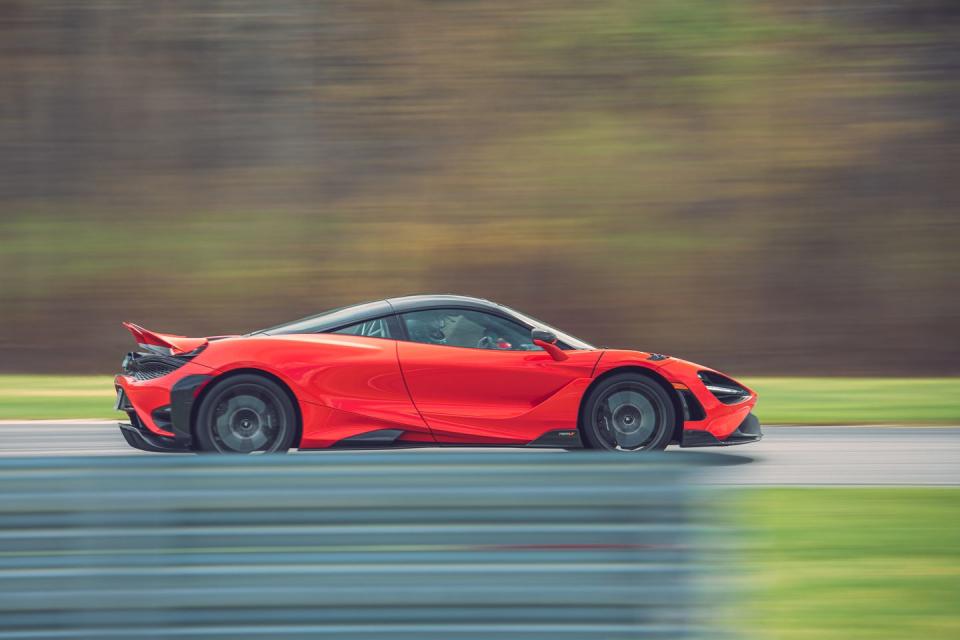
Modern GT3 machines on slick tires, with far less weight and high levels of downforce, run times about five seconds quicker. Granted, they have considerably less power. But that the LT, a car with a stereo, navigation, air conditioning, safety equipment, and places to keep another person and luggage, is even that close is a revelation. Yes, on the road it’s loud and uncomfortable. If you only drive it on the road, you might even get the sense that it shouldn’t be sold to the general public, as we originally did. But if you only drive the LT on the road, you’re missing a big chunk of why this car exists—and what makes it so damn special.
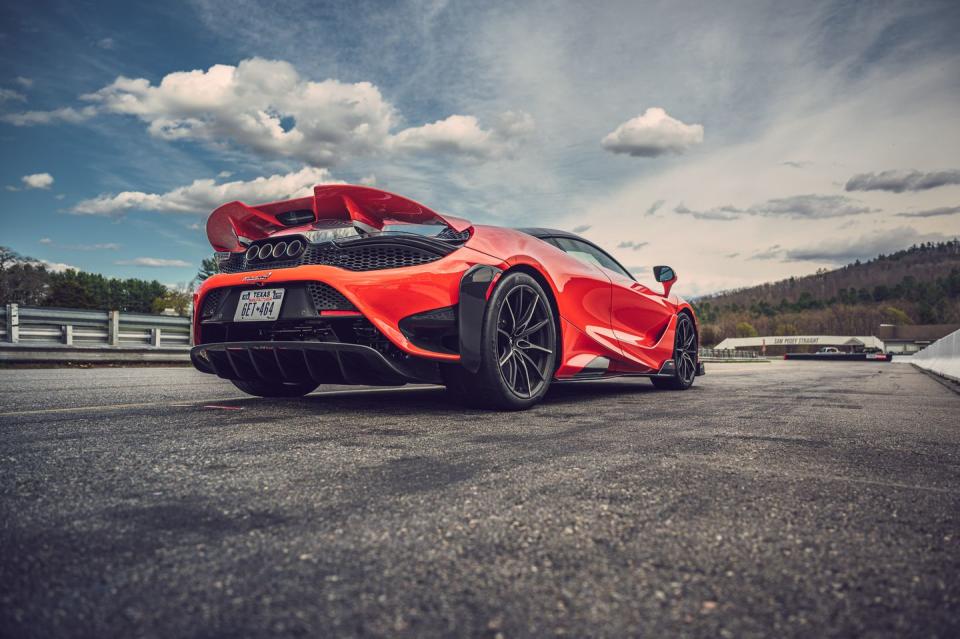
You Might Also Like

 Yahoo Autos
Yahoo Autos 